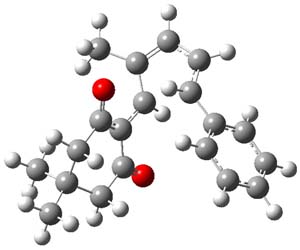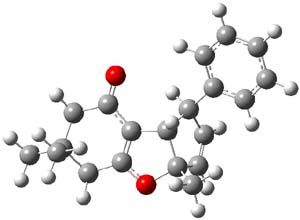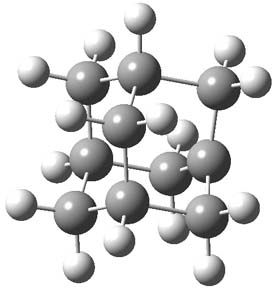Bally and Rablen have followed up their important study of the appropriate basis sets and density functional needed to compute NMR chemical shifts1 (see this post) with this great examination of procedures for computing proton-proton coupling constants.2
They performed a comparison of 165 experimental coupling constants from 66 small, rigid molecules with computed proton-proton coupling constants. They use a variety of basis sets and functionals. They also test whether all four components that lead to nuclear-nuclear spin coupling constants are need, or if just the Fermi contact term would suffice.
The computationally most efficient procedure, one that still provides excellent agreement with the experimental coupling constants is the following:
- optimize the geometry at B3LYP/6-31G(d)
- Calculate only the proton-proton Fermi contact terms at B3LYP/6-31G(d,p)u+1s[H]. The basis set used for computing the Fermi contact terms is unusual. The basis set for hydrogen (denoted as “u+1s[H]”) uncontracts the core functions and adds one more very compact 1s function.
- Scale the Fermi contact terms by 0.9155 to obtain the proton-proton coupling constants.
This methodology provides coupling constants with a mean error of 0.51 Hz, and when applied to a probe set of 61 coupling constants in 37 different molecules (including a few that require a number of conformers and thus a Boltzmann-weighted averaging of the coupling constants) the mean error is only 0.56 Hz.
Bally and Rablen supply a set of scripts to automate the computation of the coupling constants according to this prescription; these scripts are available in the supporting materials and also on the Cheshire web site. It should also be noted that the procedure described above can be performed with Gaussian-09; no other software is needed. Thus, these computations are amenable to synthetic chemists with a basic understanding of quantum chemistry.
References
(1) Jain, R.; Bally, T.; Rablen, P. R., "Calculating Accurate Proton Chemical Shifts of Organic Molecules with Density Functional Methods and Modest Basis Sets," J. Org. Chem., 2009, 74, 4017-4023, DOI: 10.1021/jo900482q.
(2) Bally, T.; Rablen, P. R., "Quantum-Chemical Simulation of 1H NMR Spectra. 2. Comparison of DFT-Based Procedures for Computing Proton-Proton Coupling Constants in Organic Molecules," J. Org. Chem., 2011, 76, 4818-4830, DOI: 10.1021/jo200513q



















